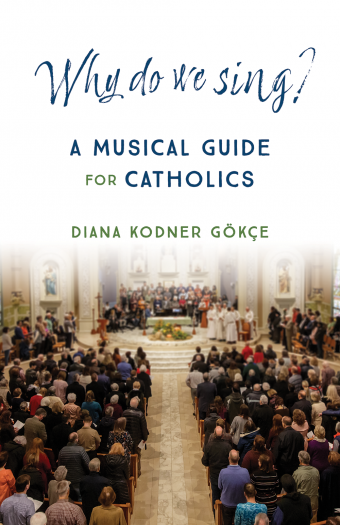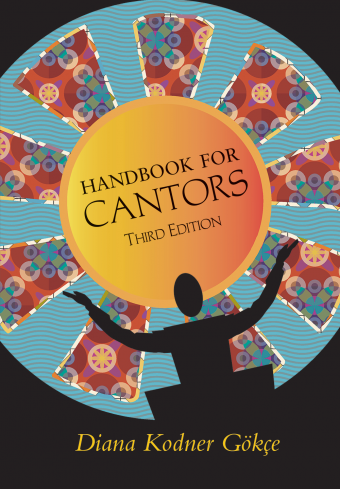
January is National Mentorship Month. This article, originally published in the Summer 2020 issue of GIA Quarterly, is shared as part of our month-long focus on mentorship.
FOR NEARLY FORTY YEARS, I have recruited and trained people from teenagers to elders for the ministry of cantor. These days my primary work is with middle school students, which has afforded me greater insight into attracting and nurturing young people for the ministry and has made me appreciate why this is important.
Young people bring so much to the table (pun intended). Their vitality can be contagious, enlivening the participation of the assembly, and too many of our music ministers and even congregants fall into an older demographic (one to which I belong) that is not representative of the general population. This imbalance will only worsen if we do not consider deliberately recruiting young people. It will require more work initially but will yield a fruitful harvest.
Providing meaning and purpose
Cantor ministry is a way to evangelize teens who, at their developmental stage, are searching for meaning and questioning everything. This evangelization is for both the minister and the young people in an assembly who might better relate to someone their own age.
Taking on a liturgical ministry leads to a deepening of faith for many people of all ages as they gain intimacy with scripture and other liturgical texts, learn about and practice the rituals of the faith, and witness to others through ministry. The cantor ministry can provide the meaning and purpose young people crave.
Adolescents are developmentally focused on their status and might respond to an open invitation placed in the bulletin if there is a competitive aspect—for example, a requirement to audition—but personal invitations are the most effective approach for recruiting cantors.
Status still comes into play. A young person who does not enjoy great status among peers can grow in confidence and self-esteem through the performance of cantor ministry. You might approach such a person by saying (truthfully, of course), “I see something in you that you may not yet see in yourself.” That something might be vocal or musical talent, or it might be emotional transparency and compassion. It might be as simple as poise. Whatever it is, that should be the starting point for your invitation to ministry.
Greater scaffolding may be required than we typically provide adult music ministers. For example, it might be best to offer the opportunity to begin by singing with an experienced adult cantor or a peer with or without experience. This would be less daunting than starting out alone and might make it easier for the teen to say, “Yes, I could try that.”
Another possibility is to have a single liturgy in which three or more young people divide the cantor responsibilities, one taking the Kyrie, another the psalm, another the Gospel Acclamation, and so on. Knowing they only need to worry about one or two moments in the liturgy, and seeing other nervous young people in the same situation, could also make it easier to agree to the ministry. Teens are often extremely motivated by peers. A weekly or monthly parish liturgy where most or all of the ministries other than priest or deacon are performed by teens might be the best motivation of all in this regard.
If you can recruit a student who enjoys greater status among peers, others may be more likely to follow. It is also an opportunity to help such students discover new gifts, talents, and interests they might not yet have considered. I find many similarities between the disciplines that cantors require preparing for ministry and the work of athletes.
Rather than overlook young athletes, pursue them, and extend personal invitations as outlined above. Be sure to point out such similarities as goal setting and the satisfaction of achieving those goals. Singing is as physical as any sport, improving mind-body awareness and respiration as the basis for everything else.
How to extend the invitation
Most of the recruiting I have proposed thus far requires that you first get to know some young Catholics. Whenever we engage and work with young people, it is imperative to rely on a program such as the VIRTUS® “Protecting God’s Children” program of the National Catholic Risk Retention Group, Inc., currently implemented in 56 arch/dioceses. This excerpt comes from its Code of Conduct.
1. Conduct With Youth
Clergy, staff, and volunteers interacting with youth shall maintain an open, transparent and trustworthy relationship between youth and adult supervisors.
1.1 Clergy, staff, and volunteers must be aware of their own and others’ vulnerability when working alone with youth, and should use a team approach to manage youth activities.
1.2 Physical contact with youth can be misconstrued and should occur in public, and be appropriate and completely nonsexual (PAN). Physical contact should never occur in private.
1.2.1 Except in emergencies, physical contact between adults and minors in professional relationships should be initiated by the minor. Adults should not generally initiate physical contact other than an occasional congratulatory pat on the upper back, hand shake, “high five”, etc.
Based on 1.1, it might be best to work with a colleague, an adult volunteer from the parish cantor ministry, the parish youth minister, or someone from your parish school or CCD program. Colleagues such as these can quite likely refer you to talented young singers who are potential candidates for the ministry. This might also be an opportunity for you to propose that cantor ministry be recommended among community service projects, as it is a service to the community. This option would likely appeal to some students and could strengthen their commitment.
I have a definite advantage, being the liturgical music teacher in a middle school and having an amazing colleague in the religion coordinator at our campus. In the past, our eighth-grade students were confirmed in early November, and I could rely on fully initiated Catholics for cantor ministry, but that is not essential. Students younger than seventh grade tend not to have the emotional maturity for all aspects of the ministry, even though they may have poise and beautiful voices.
Build relationships first
Those of us in teaching know the importance of relationships with students, particularly for adolescents. I like to pose probing questions to my students, verbally or in writing, and given the opportunity, I’d encourage you to do the same. Ask them, “What are you passionate about? What are you most proud of? When are you at your best? How do you respond when faced with a challenge? What are you most grateful for? Who are your heroes, and why? When are you most expressive? What do you want people to know about you? What role does faith have in your life? How is music a part if your life? What do you do for others? How would you make the world a better place?” You will glean a wealth of information and insight.
If you do not teach in a parish school or have a youth choir, you may not know any young people in your parish. Most parishes have a youth ministry, and this could be a good place to get to know some young people. Working with the youth minister, you could offer a karaoke night and launch some good conversations over refreshments. This last part should focus on asking questions like those above and listening carefully to responses. You want to learn all you can about these teens’ interests, personal goals, and struggles.
Another way to get to know some young people in your community might involve a music ministry gathering in which everyone is invited to bring a teenage relative or friend of the family. You could sing some liturgical songs together, talk about the ministry of cantor, and offer some recognition and expressions of gratitude for the adult music ministers, followed by the same kind of conversation discussed previously.
One note of caution: it is best not to be too demanding of young cantors up front. If you require weekly rehearsals, attendance at every week’s liturgy, or at very early liturgies, you may lose some who could grow into that very thing. Still, you should be clear that there are expectations and what those are. Be sure to discuss attire, demeanor, punctuality, and the like.
If all of this is daunting, try one small thing. Speak with the school music teacher or talk to your music ministers about the young people in their lives. Consider offering a weeklong day camp in your parish for getting to know potential cantors and setting the groundwork for music ministry. There you might give young people a chance to learn about and even play parish instruments. (My students love the organ crawl offered to us by the music director at Holy Name Cathedral.)
There could of course be singing of liturgical music, but let participants select what to sing; teens appreciate having choice and a voice. A summer retreat in collaboration with a parish colleague would be another great option. Liturgical life slows some in the summer, and you could devote at least some of this season to attracting and training young cantors so they are ready to fly solo in the fall.
Why do We Sing? A Musical Guide for Catholics
Diana Kodner Gokce
G-9818
Filled with wisdom for new Catholics as well as those who have been attending liturgy all their lives, this book gives the person in the pews prayerful insight and solid foundation in the basics of the music we sing every week at Mass. Why Do We Sing? examines why but also when and how we sing in church: What is the significance of the different things we sing? What difference does it make if I sing, especially since I am not a very good singer? How do I get over my self-consciousness with singing?
A book for everyone in the parish, this book seeks to help every liturgical gathering find its musical voice and more fully embrace its ability to participate fully, actively, and consciously in the liturgy.
Handbook for Cantors (revised ed.)
Diana Kodner Gokce
G-9561
The Handbook for Cantors presents a thorough outline of the overall ministry of the cantor—from a deeper understanding of the theology and vocation of the ministry to an examination of the practical nuts and bolts of gesture, vocal technique, and music theory. This is a comprehensive resource on singing the liturgy that no cantor or music minister should be without.

Diana Kodner Gokce
Diana is the author of Handbook for Cantors, 3rd edition(GIA Publications, Inc.). She has taught liturgical music at Loyola University and worked as a music minister in numerous Chicagoland parishes including Holy Name Cathedral. She is currently Liturgical Music Coordinator at The Frances Xavier Warde School.




Recent Comments